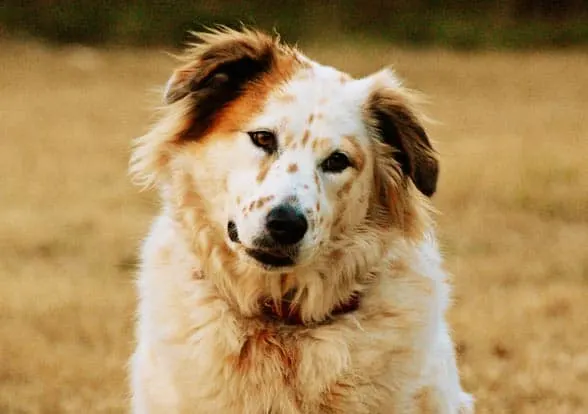Burrs, beggars’ lice and briars present some real thorny problems for both dogs and dog parents–but by checking your dog after every hike, you can often remove the burr yourself. Help avoid dematting fees at your next grooming visit and discomfort–and danger–to your dog by checking your dog frequently.
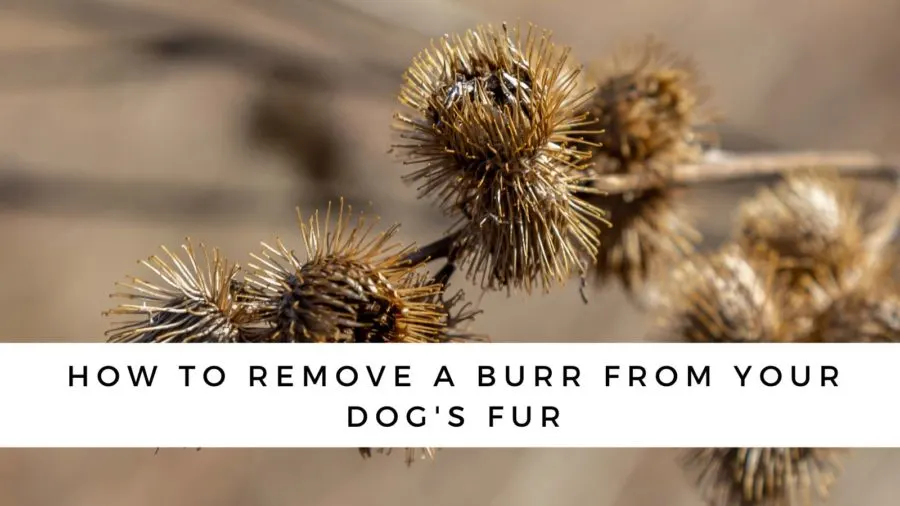
We know burrs. Although we have a regular lawn in front of our house, we’re otherwise surrounded by wilderness.
Irie’s short, smooth hound coat requires no dog grooming but Tiki’s coat is another matter! She has a dense coat with feathers and a super bushy tail that’s just perfect for snagging on all things thorny (and often bringing back more souvenirs from our dog walks than we’d like!)
In the summer months, we trim her feathers so we can keep a close watch out for ticks (another big potential problem in our region) but, during the winter, they’re long and just waiting to bring home burrs.
How to remove a burr from your dog’s coat
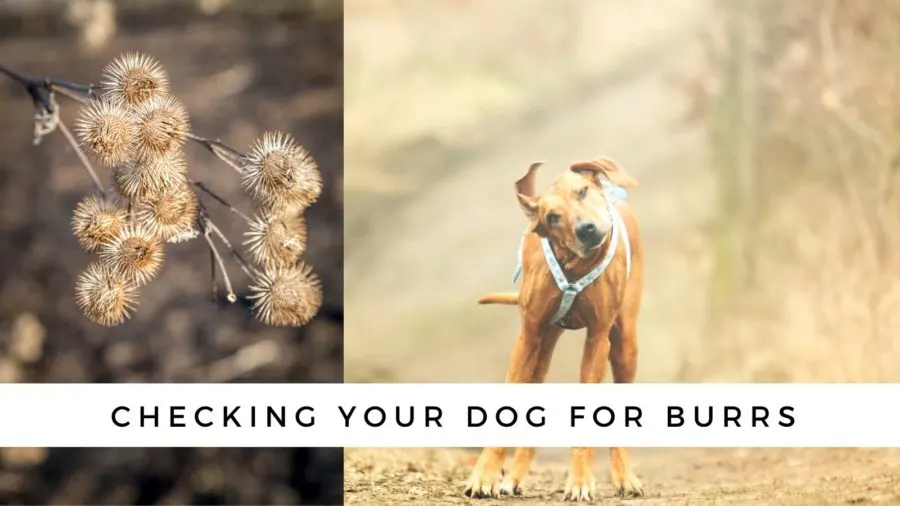
Step one, of course, is to FIND the burrs. After every long hike, take a few minutes to run your hands over your dog’s coat including under his arms and between his paw pads.
If you find burrs in your dog’s fur, the best method to remove them is to first try to detangle the surrounding hair with your fingers, picking through the fur to gently remove the burr.
Fortunately we primarily have soft clover burrs so I can pull them out with my fingers but, if you have cockleburs or other prickly burrs, you may need to wear gloves. Often burrs removes easily if you get it out right away.
Also, try using a pick (either one for human hair or the rake-type brushes for dog hair) to gently untangle the hair around the burr. A fork can also be used for this purpose.
If you just can’t untangle the burr, try crushing it with pliers. Crushing the burr and breaking it into tiny pieces can make it easy to then pick out or brush out of your dog’s fur.
I also often have to crush clumps of tiny beggar’s lice burrs that get caught in Tiki’s fur.
If you’re finding burrs in your dog’s hair, also be sure to check the fur between his paw pads. Burrs in the paw pads can be painful!
The danger of foxtails to your dog
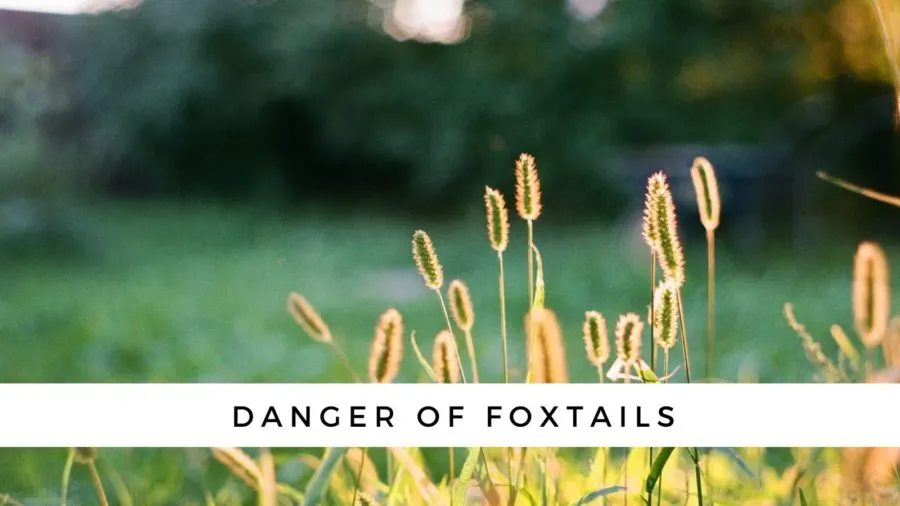
Another big grooming challenge–and one that can be dangerous to your dog’s health–is the foxtail.
These grasses (here we call it speargrass) have barbs that can work their way through your dog’s fur and into his skin…and even travel to organs.
These grasses with barbed spikelets catch on your dog’s fur when he walks by and can puncture his skin.
The barbs on the foxtail keep it migrating forward, and they’ve been found in the ears, eyes, nose, and organs of dogs.
Be sure to check your dog’s paw pads as well as his ear flaps after a walk in the grass.
Foxtails look similar to a wheat-type grass and have several different names. (Here they’re called speargrass.) If you find a foxtail snagged in your dog’s fur, be sure to remove it immediately.
Pin it to remember How to Remove Burrs from Your Dog’s Coat
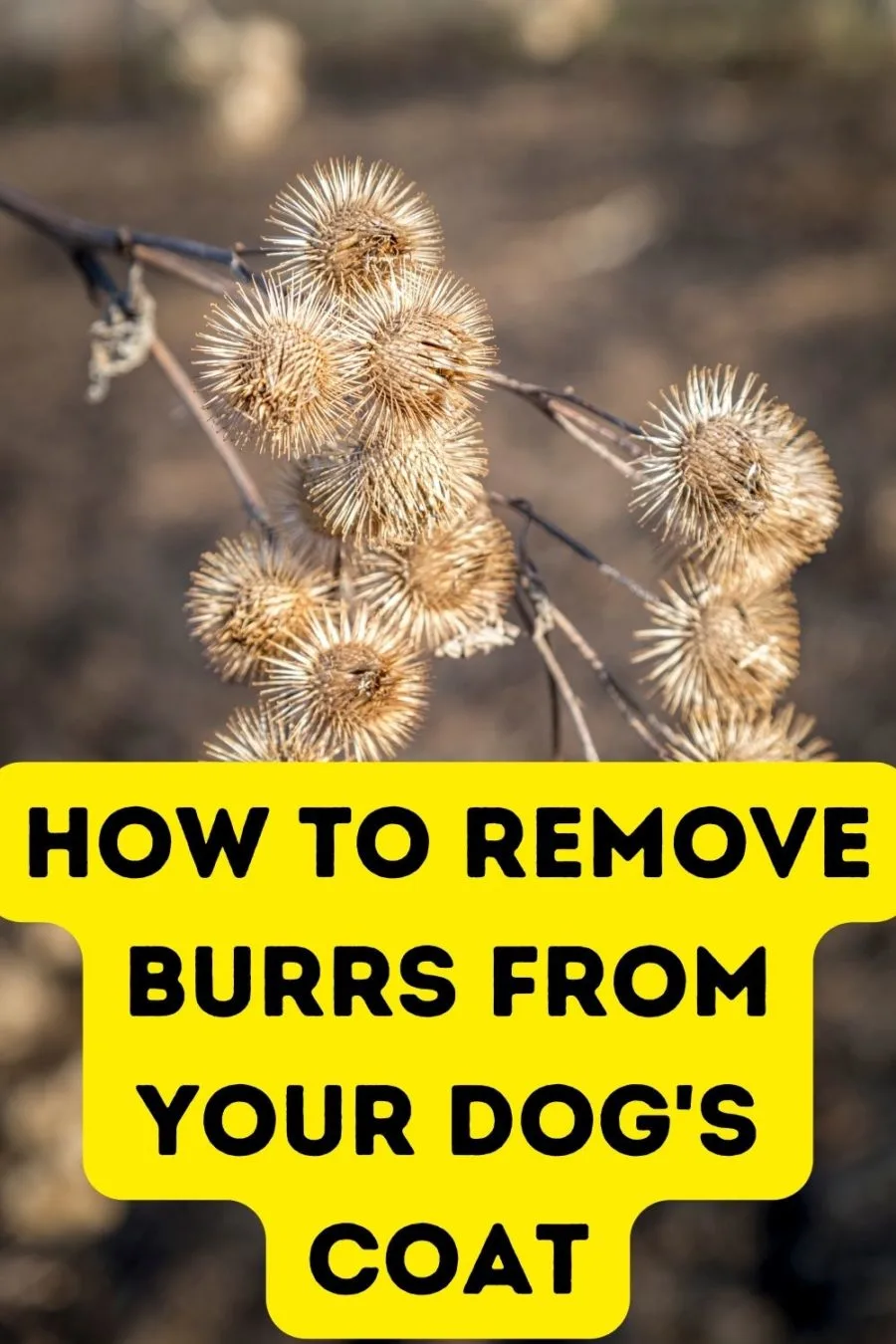
- National Conservation Dog Day - January 8, 2026
- 8 Tips to Turn Your Dog Picnic Into an Enrichment Activity - January 7, 2026
- Review: Jimmy BX7 Pro Anti-Mite Vacuum Cleaner - December 16, 2024

